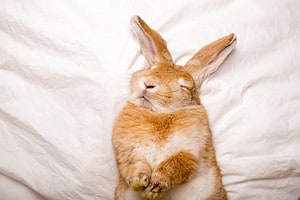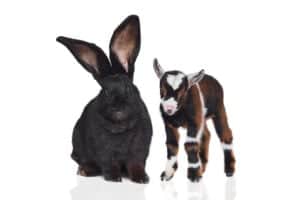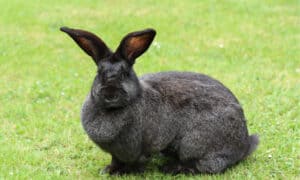“Here comes Peter Cottontail, Hoppin’ down the bunny trail.”
Growing up, we all have seen depictions of bunnies in media and pop culture, the cute little rabbit with a puffy tail that looks like a cotton ball. However, if you’ve ever looked at a live rabbit’s tail, then you’ve seen that it doesn’t look like a cotton ball at all. So why the depiction?
The lore of the rabbit tail probably comes from generations past, before domesticated rabbits existed as pets in people’s homes. The ordinary cottontail rabbit has a white underside to its tail, and when running, it may look like a little pom pom on the end of it.
Of course, all rabbits have tails, but if they don’t look like a cotton ball, what do they look like? Do bunnies have long tails? Do they have short tails? What is the average rabbit tail length? We have all the answers and more below.
Some bunny tails are stumpy, some are long, some are fluffier, and others have coarse fur. It all depends on the little rabbit’s breed, species, and life. Let’s start discussing some common topics about rabbit tails.
What Do Rabbit Tails Really Look Like?
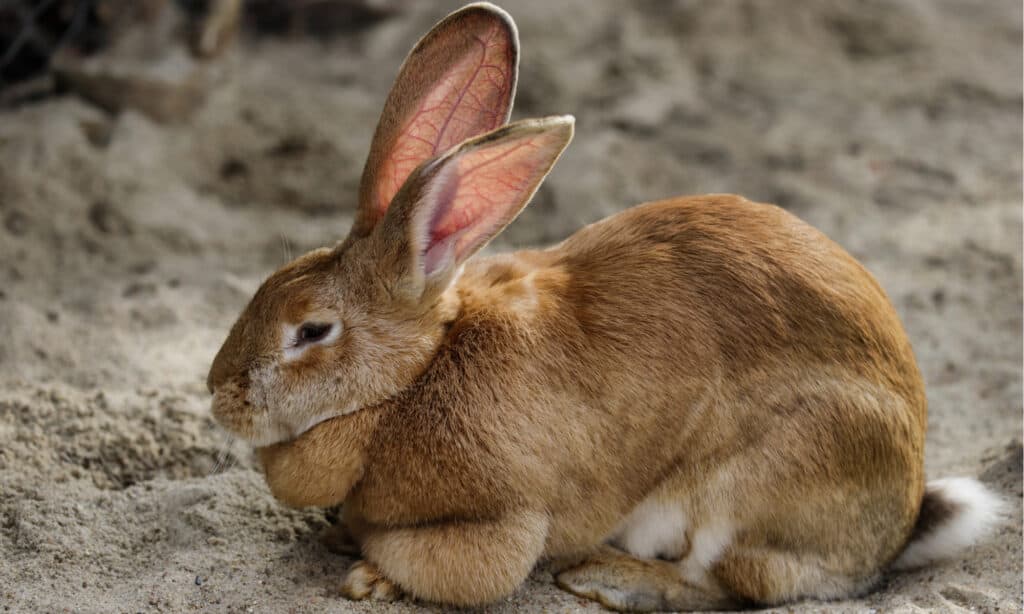
Rabbit tails are long and flat, called scuts
©Veroja/Shutterstock.com
So, as stated earlier, a rabbit tail is not a fluffy white cotton ball. In fact, rabbit tails are quite long. Rabbits tuck their tails in at their rears most of the time, like a deer. Rabbit tails also have a specific name: the scut. Other animals with scuts include bears, deer, goats, and moose.
Scut specifically means “a short, erect tail.” This means they can stick them out and control them, like a cat’s tail. It’s not just a length of fur. A rabbit tail actually is a part of its spine. It is bone coated in muscle, then covered in skin and fur. They have complete control over it, the way we have control over our fingers.
The average domestic rabbit tail length is 2 inches, while a hare’s tail can get up to 4 inches long. The world’s longest rabbit tail measured in at 6.7 inches, which is more than half a foot.
What Are Wild Rabbit Tails Used For?
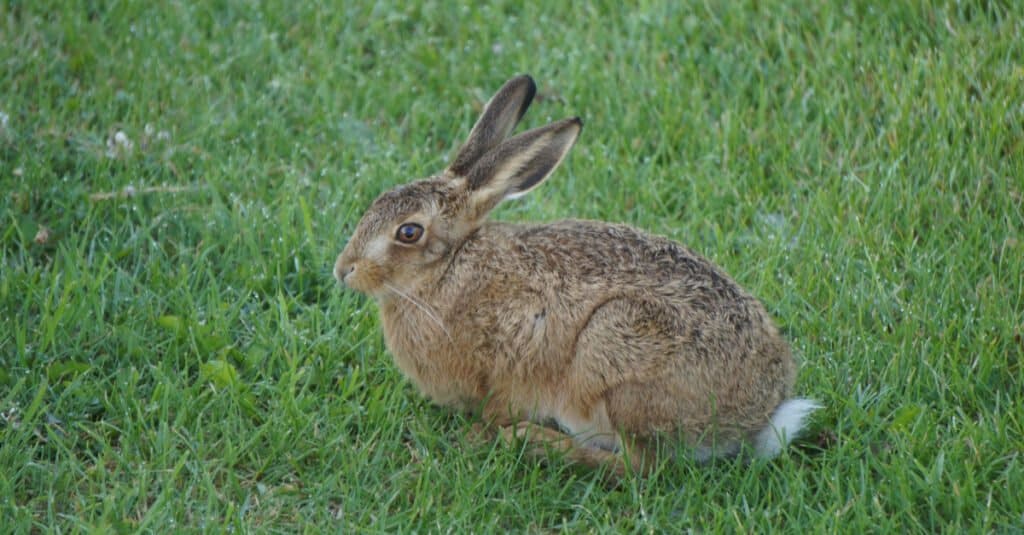
Rabbits use their tails to confuse predators.
©E Gatehouse/Shutterstock.com
You’d be right in asking this question because there is an excellent reason people have thought that rabbits had fluffy tails. The scut is for more than looking cute; it has a purpose.
Wild rabbits and domestic rabbits are entirely different species, so let’s get that out of the way. The way they utilize their tails differ slightly, and we will discuss that.
The underside of a wild rabbit tail is usually white. Not black, brown, or another color. It is essential to know that they evolved this way purposefully to distract predators.
Rabbits perk their tails up as signs of danger, and the white tells other rabbits to get back home and hide. When running, they flip their tails up to confuse the predators chasing them. This has been proven as a successful measure to evade capture.
A scientist named Dirk Semmann did a study to figure out why white was the optimal color through evolution. He hired people to do a study where they followed a black or white dot on a computer and offered them money to pursue the white dot.
It was proven harder for them to track white than black, even with money to fuel their desire to win. They made more errors while tracking the white dots, which proves that it was a purposeful evolution for rabbits to have white undersides to their tails.
What Are Domestic Rabbit Tails Used For?

Domestic rabbits use their tails to communicate feelings and help themselves balance
©Eric Isselee/Shutterstock.com
Obviously, evading predators is not a massive concern for domesticated rabbits. Domestic rabbits are a different species that has been created for the sole purpose of being pets or feeder rabbits. They are plumper and more docile than their wild counterparts, with less natural instincts for survival.
Some domestic rabbits may have white undersides to their tails, but most do not. They have not needed to evolve in that way to avoid predators. Domestic rabbits do still use their tails for a few purposes, though.
They use their tails to communicate emotions often. If your pet rabbit raises its tail, it can be a sign of aggression. They are protecting their territory and are ready to fight, or maybe you have made them feel threatened in some way.
If they tuck their tail in, they feel cautious, like when exploring a new room of the house. When bunnies flop over, their tail is often extended out in a relaxed state, which means they feel both comfortable and safe.
Another way rabbits use their tail is by wagging them. Wagging their tail is similar to a thump of their foot. It means they feel angry or contemptuous, and you should probably give them a treat or attention because they are unhappy.
It is also thought that a rabbit tail can assist in their balance, just like a cat or dog, mainly because they hop around everywhere.
Why Are Rabbit Tails Short?
Rabbit tails are stumpy, not long and waving like a cat or dog’s tail. Why is rabbit tail length so short? This is because rabbits need to have something more challenging for predators to grab on to, and the stumpier tail makes it easier to evade them.
Other animals with scuts have them for the same reason. A predator could catch onto a long tail on animals like that and use it to drag them down. Having a scut means they can use it to warn other animals that danger is imminent and then confuse the predator without worrying about being caught.
If their tails were longer, their warnings would not be as adequate. A small noticeable flash of white is easier to see and easier to run with so that they don’t end up like some other animal’s dinner.
Rabbits are both adorable and fascinating because they aren’t an animal common to the average household. Knowledge about rabbits aren’t as typical because of this, so there are a lot of fun facts to explore concerning them.
The photo featured at the top of this post is © Oleksandr Lytvynenko/Shutterstock.com
Thank you for reading! Have some feedback for us? Contact the AZ Animals editorial team.




